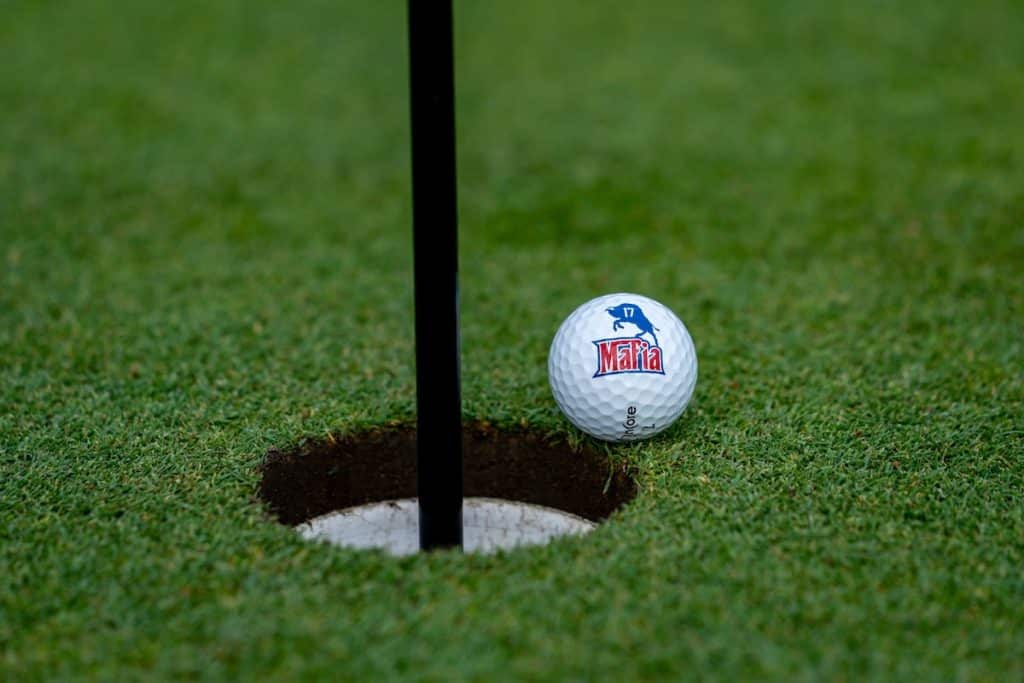Unless you’re a golfer living under a rock, you’ve heard of a hole-in-one. The same is true with a double eagle. But have you heard of an Albatross in golf?
This rare feat is achieved by golfers that shoot an incredible three under par on any given hole. But what exactly is an Albatross in golf, and how can you hit one?
Read on as we provide a detailed description of an albatross in golf and tips on how to hit one yourself.
What is an Albatross in Golf and How Do You Hit One?
Hitting an Albatross in golf requires a mixture of skill, strategy, and a bit of luck.
First, it calls for a precise and powerful drive from off the tee. This typically happens on a par 5, where a golfer’s first shot travels within a reachable distance of the green.
Even after a great drive, the next shot is equally crucial and requires high accuracy. It needs to cover the remaining distance and land directly into the hole. This shot often involves using a long iron or a fairway wood to achieve the distance needed.
Weather conditions and course layout add to the complexity.
While the Albatross is a rare feat even for professional golfers, understanding the mechanics and conditions can improve your chances of achieving this extraordinary accomplishment in golf.
Also Read: Best Drivers for Beginners

What Are the Odds of Making an Albatross?
Achieving an Albatross in golf is considered an extraordinary accomplishment, largely due to its sheer improbability. It is such a rare event that the precise odds are somewhat difficult to quantify. Only a handful of amateurs have ever hit an Albatross.
However, the USGA reports that the odds of a golfer making a hole-in-one stand at 12,500 to 1, while for an amateur to make a double eagle or an Albatross, the odds skyrocket to an estimated 6 million to 1.
Professional golfers’ odds are slightly better due to their skill, but it’s still a rarity. According to the PGA Tour statistics, the chance of a professional golfer scoring an Albatross is approximately 1 million to 1.
These statistics highlight the incredible skill and a bit of good fortune needed to score an Albatross.
Notable Albatrosses on the PGA Tour
Jeff Maggert – 1994 Masters Tournament
During the third round of the 1994 Masters at Augusta National Golf Club, Jeff Maggert hit a 222-yard shot on the par-5 13th hole that bounced once before landing directly in the cup.
Gene Sarazen – 1935 Masters Tournament
Known as “The Shot Heard ‘Round the World,” Gene Sarazen’s albatross on the 15th hole during the 1935 Masters Tournament is one of the most memorable in history. Sarazen was trailing by three strokes when his 235-yard 4-wood second shot on the par-5 hole found its way into the hole, tying him for the lead and ultimately leading to a playoff he won, achieving one of the most legendary comebacks in golf.
Louis Oosthuizen – 2012 Masters Tournament
The 2012 Masters Tournament saw another astonishing albatross by Louis Oosthuizen on Augusta’s second hole. His 253-yard 4-iron second shot on the par-5 hole took a few bounces on the green before rolling into the hole. This helped Oosthuizen to lead for much of the final round, although he eventually lost the tournament in a playoff. This albatross remains the only one ever scored on the second hole during the Masters.
What’s Better Than an Albatross?
Believe it or not, there’s actually a feat even more remarkable than the Albatross – the elusive and near-mythical Condor. This term is reserved for the exceedingly rare occasions when a golfer manages to shoot four under par on a single hole.
This incredible accomplishment can only occur on a par 5 hole. Given the length of modern golf courses, achieving a Condor is virtually impossible for most amateur players.
It’s believed that only five Condors have been recorded in golf history, underscoring just how rare this golfing achievement is. The rarity of the Condor compared to the Albatross is reflected in the lack of official statistics documenting its occurrence.
To put the difficulty of this feat into perspective, remember that an Albatross is already an achievement with odds estimated at 6 million to 1 for an amateur golfer. The odds for a Condor are so astronomical they’re not even listed.
So, while it’s possible to score better than an Albatross, the likelihood of achieving a Condor is slim. Nonetheless, the pursuit of these rare and exciting feats is part of what makes golf such a thrilling sport.
The Bottom Line
The Albatross, scoring three under par on a single hole, is an extraordinarily rare and impressive feat in the game of golf, requiring a blend of skill, precision, strategy, and a touch of luck. Regardless of whether you’re a seasoned professional or an enthusiastic amateur, the pursuit of these milestones adds an element of excitement and challenge to the game.
Frequently Asked Questions
Is an Albatross Better Than a Hole-In-One?
An Albatros and a hole-in-one are both incredible achievements in golf, but they differ in their nature and rarity. While incredibly thrilling, a hole-in-one is scored on a par 3 hole and requires one stroke to get the ball into the hole from the tee. An Albatros, on the other hand, is scored on a par 5 hole and requires two strokes.
In terms of rarity and difficulty, an Albatros is considered the more challenging feat, given it requires two near-perfect shots over a longer distance. So, while both feats are celebrated, an Albatros can be considered ‘better’ because of their increased difficulty and rarity.
Has Tiger Woods Had an Albatross?
Yes, Tiger Woods has had an Albatross. He achieved this extraordinary feat during the 1995 Phoenix Open. Woods was only 20 years old at the time and was still an amateur golfer. During the third round on the par-5 13th hole, he made his second shot from 207 yards out, which sailed straight into the hole for his first and only Albatross. This achievement is among a list of impressive feats that Tiger Woods has accomplished in his golfing career.
How Many Albatrosses Have Been Hit at Augusta National Golf Course?
As far as records show, Augusta National Golf Course has witnessed four Albatrosses during the Masters Tournament. These include Gene Sarazen in 1935 on the 15th hole, Bruce Devlin in 1967 on the 8th hole, Jeff Maggert in 1994 on the 13th hole, and most recently, Louis Oosthuizen on the 2nd hole in 2012.
Sean’s parents first put a golf club in his hands at the age of 8. He immediately fell in love with the game of golf. Today he’s passing on that love to his own kids.
